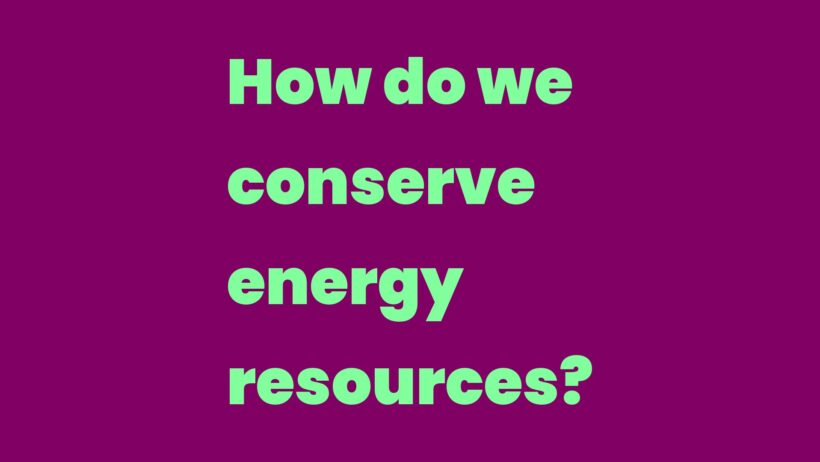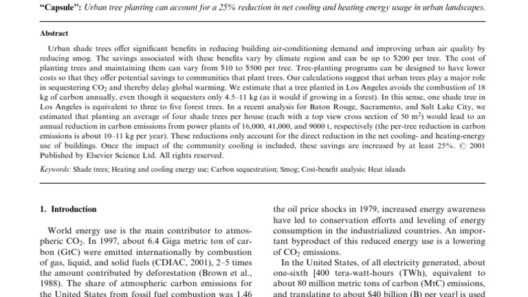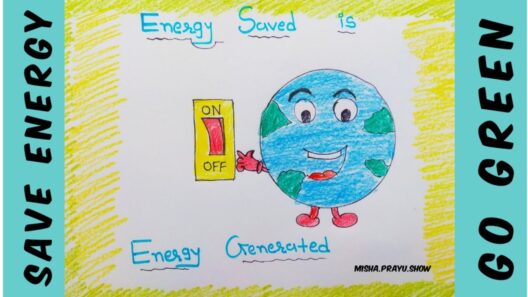In an age where the specter of climate change looms ever larger, the workplace is not just a hub of productivity but also a crucible for transformative environmental stewardship. Much like a symphony orchestra, each note played by various departments can harmonize to create a remarkable sound of sustainability. Thus, it is imperative that organizations orchestrate efforts to conserve energy and resources, turning potential cacophony into a melodious commitment to a greener planet.
Understanding the significance of energy conservation begins with introspection into daily operations. The workplace can be likened to an intricate ecosystem, where every decision cascades through its hierarchy, influencing overall health. From office supplies to lighting choices, the implications of our decisions ripple outward. Thus, it becomes essential to adopt energy-efficient practices that resonate throughout the fabric of corporate existence.
1. Conduct Energy Audits: The Prelude to Change
To innovate effectively, one must first assess. Conducting energy audits serves as the cornerstone for any energy conservation strategy. This audit functions like a detailed map, illustrating where energy is consumed, and identifying inefficiencies lurking like shadows in the recesses of your workspace.
By meticulously evaluating lighting, heating systems, and electronic devices, organizations can pinpoint voracious energy consumers. This data can then inform decisions that streamline consumption, akin to a sculptor chiseling away excess marble to reveal stunning artistry.
2. Implement Smart Technology: The Conductor’s Baton
Imagine a conductor guiding an orchestra, ensuring that each instrument plays in harmony with the others. Smart technology acts as this baton, directing energy use with precision. Programmable thermostats, energy-efficient lighting systems, and smart power strips can optimize energy consumption based on actual needs rather than assumptions.
For instance, installing motion sensor lights ensures that illumination graces only spaces in use, avoiding waste like superfluous embellishments on an otherwise sleek design. This technology not only enhances efficiency but also evaporates energy waste, reminiscent of a morning fog dispersing to reveal a bright day.
3. Cultivate a Culture of Conservation: The Heartbeat of Sustainability
To navigate the path towards sustainability, fostering a culture of conservation within the workplace is quintessential. This entails engaging employees in sustainability initiatives—a grassroot movement that empowers individuals to act as stalwarts of change. Workshops, newsletters, and incentive programs can galvanize awareness around energy consumption.
Like seeds planted in fertile soil, employees who grasp the importance of conserving resources can yield a bountiful harvest of eco-friendly practices. Encourage carpooling, telecommuting, and virtual meetings, which not only conserve energy but also engender a robust camaraderie among coworkers, akin to a nave of vines interweaving for mutual support.
4. Optimize Resource Use: The Art of Precision
In the meticulous crafting of efficiency, optimizing resource use is akin to refining an exquisite dish where every ingredient plays a crucial role. Consider digitizing documents to minimize paper usage, thereby conserving trees—the very lungs of our planet. This action, while seemingly small, contributes significantly to creating a more sustainable workplace.
Furthermore, adopt practices that elevate the longevity of office supplies; for instance, using refillable pens and rechargeable batteries stabilizes resource waste. Institute a “reuse and recycle” policy, where old materials find new life, reminiscent of a phoenix, rising anew from the ashes.
5. Choose Renewable Energy Sources: The Beacon of Hope
As the winds of change blow favorably toward sustainability, organizations may embrace renewable energy sources. Investing in solar panels, wind turbines, or purchasing renewable energy credits embodies an earnest commitment to reducing carbon footprints. This choice paints a narrative of hope where businesses become beacons of progress, lighting the way toward a sustainable future.
Such an investment may initially appear daunting, like navigating treacherous waters. However, when harnessed correctly, these alternatives can lead to substantial long-term savings, returning dividends that nourish both the bottom line and the environment.
6. Engage with the Community: Extending the Reach
The ripples of energy conservation extend beyond the workplace walls; engagement with the local community amplifies sustainability efforts exponentially. Partnering with local environmental organizations or hosting community events dedicated to conservation can create a network of shared commitments, like threads woven into a rich tapestry.
Involvement in these initiatives fosters unity and promotes collective responsibility—an empowering reminder that our individual actions can precipitate monumental change.
7. Monitor and Report Progress: The Ongoing Symphony
In the world of energy conservation, monitoring and reporting progress is akin to conducting a symphony with precision, offering insights on how well each section is playing. Establish key performance indicators (KPIs) to assess the effectiveness of conservation strategies, adjusting as necessary to maintain harmony.
Communicate these successes within the organization to inspire ongoing commitment. Visual displays showcasing energy savings can instill pride, turning behaviors into a collective mission. Each small victory is a note in the overarching musical score of organizational sustainability.
In essence, a workplace can serve as a microcosm of sustainable practices and energy conservation strategies that contribute to a larger environmental narrative. Just as a single spark can ignite a forest fire, collective efforts in the workplace can illuminate pathways towards a brighter, more sustainable future. Embrace the role of the architect of change, and mold the workplace into a bastion of eco-consciousness, crafting a legacy that reverberates through time.







